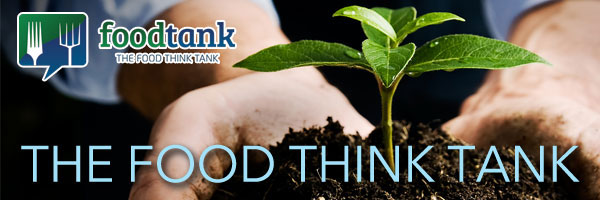Food Tank By The Numbers: Family Farming


Greetings from Budapest, Hungary. I am here as part of the Global Forum and Expo on Family Farming.
Today, Food Tank is releasing a new research report called Food Tank By the Numbers: Family Farming. You can share an article about the report with a link to the complementary download by clicking HERE.
The report proves that family farms—farms or ranches owned and operated by families—are not only feeding the world, but also nourishing the planet. Family Farms are developing effective ways to address global food security, increase income, protect biodiversity, and conserve the environment for a growing population.
According to research in the Food Tank report, approximately 70 percent of the world’s freshwater goes toward agriculture, and it is estimated that this will increase by 19 percent by the year 2050. Soilsare being depleted 10 to 40 times faster than they are being replenished, and as a result, 30 percent of global arable land has lost productivity. And land use changes as a result of agriculture—deforestation and land degradation—are contributing to climate change.
But millions of family farmers are using agroecological approaches to combat climate change and create resilience to food price shocks, natural disasters, and conflict. Agroforestry, inter-cropping, cover crops and green manure, solar drip irrigation, integrated pest management, and utilizing orphan and indigenous crops are helping protect natural resources, improving nutrient density, and increasing farmers’ incomes.
We need to bring more attention to what’s being implemented by family farmers—big and small—on the ground in sub-Saharan Africa, Southeast Asia, Central America, the United States, and Europe because what they’re doing is working. These innovative practices, which are grounded in farmers’ knowledge, are nourishing communities and protecting the planet’s resources at the same time. Smallholder and family farmers are the backbone of food production all over the world.
Seventy-five percent of Earth’s plant genetic resources have been lost, but family farmers are protecting plant diversity across the world. According to the report, by planting diversified and indigenous crops, family farmers can produce between 20 to 60 percent more yields than farmers who produce only one type of crop.
Supporting family farmers’ livelihoods through facilitating access to markets can have a substantial and significant effect on increasing rural incomes, which includes 70 percent of the world’s poor. Organic certification for family farmers has also had a positive effect on their incomes—in Indonesia, the Boyolali Farmers’ Association, Asosiasi Petani Padi Organik Boyolali [APPOLI], has shown a 40 percent reduction in production costs because of organic farming practices, and the market price of the organic rice that they grow is 20 percent higher than non-organic rice.
Family farming also drives economic growth and social stability by providing job opportunities. Small farmers create a “multiplier” effect that extends beyond the farm sector, spending a high share of their income in other sectors, including construction, infrastructure, and manufacturing, which creates demand for other goods and sectors in their communities. In Asia, for example, every dollar of income that the farming sector generates also creates an additional US$0.80 in non-farming sectors.
“Family farmers deserve to be recognized for the multiple roles they play—as business women and men, innovators, teachers, and stewards of the land. Family farmers need our recognition and our support now, not later,” says Caterina Batello, Senior Agricultural Officer FAO.
With increased support from research institutions and the funding and donor communities to invest in family farmers, global food security can be achieved, environmental resources can be protected, and national economies can grow.
Further highlights from the report:
● Recent research by FAO shows that, in their global sample, over 98 percent of farms are family farms and these produce at least 56 percent of the world’s agricultural production. In many countries, the contribution of family farmers to food production far surpasses their share of land holdings.
● Family farming makes up the majority of agricultural production in sub-Saharan Africa,where approximately 33 million farms in the region, or 80 percent, are smallholder farms.
● More than 80 percent of all agricultural holdings measure less than two hectares in size and are thus managed by smallholder farmers.
● All farmers can have a direct impact on nutrition through the crops that they choose to grow and consume, as well as through post-harvest and preparation methods.
● Smallholder farmers utilize farming practices that preserve biodiversity—not just for nutrition and taste—but also because cultivating a wide variety of species helps insulate farmers against risk of plant disease, and crop diversity promotes soil health and increases yields.
● Diversified and indigenous crops are typically more resilient to climate change and extreme weather conditions.
● The use of organic fertilizers by family farms has been proven to be effective in reducing soil degradation.
● Smallholder farmers typically use innovative technologies to conserve resources. Drip irrigation methods used in Benin, for example, can save between 30 and 60 percent more water than conventional methods.
● Evidence shows smallholder and family farming can be the key to mitigation of the negative effects of climate change and improving food security.
● If 10,000 small- and medium-sized farms converted to organic, sustainable production, the environmental effect in terms of carbon sequestration would be equivalent to removing over one million cars from the road.
● In Vietnam, land tenure reforms that provide private land use rights to smallholder farmers have had a significant and positive effect on agricultural productivity, as well as increasing household incomes.
● Mobile phone technology has been instrumental in breaking down barriers that smallholder, rural farmers, especially women, face in accessing markets.
● Despite growth of large-scale farms around the world, smallholder and family farming still make up the majority of global agriculture
Also in cased you missed it last week, please watch Food Tank’s new short video, “Family Farmers + You = Nourished World” HERE. Also please don’t forget to sign our global petition campaign.
Thanks for all that you do to build a better food system!
All The Best,
Danielle Nierenberg
President, Food Tank



